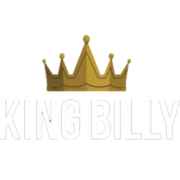How to Play Blackjack Best Hands and Ace the Game
the author
Jay
date post
Jun 17, 2023
As one of the most popular casino games, blackjack can offer high rewards or significant losses. With the right strategy, you can learn how to play the perfect hand and increase your chances of winning. In this guide, we’ll show you how to play the best blackjack hands and make the right decisions.
Understanding Blackjack Hands
A blackjack hand consists of two cards, one dealt to the player and one to the dealer. The goal is to have a hand value of 21 or as close to it as possible, without going over. The hand value is the sum of the card values, and each card has a value from 1 to 11 or 10.
Best and Worst Blackjack Hands
The best blackjack hand is a natural, which is a two-card hand that adds up to 21. This hand comprises an Ace and a card with a value of 10. A natural pays out 3:2, making it the most desirable hand in blackjack.
On the other hand, the worst blackjack hand is a hard 16. This hand has a high chance of busting, which means that the player goes over 21 and loses the bet. When the dealer’s up card is 10 or an Ace, the player’s chances of winning decrease significantly.
Playing the Best Blackjack Hands
To play the best blackjack hands, you need to learn the basic strategy. This strategy involves making the right decisions based on the value of your hand and the dealer’s up card. Here are some tips for playing the best blackjack hands:
- Always stand on a hard 17 or higher: If your hand value is 17 or higher, it’s best to stand and not risk going over 21.
- Hit on a hard 12-16 if the dealer’s up card is 7 or higher: If the dealer has a strong up card, you should try to improve your hand value by hitting. However, if the dealer’s up card is 4, 5, or 6, you should stand.
- Double down on a hard 9-11 if the dealer’s up card is weak: When the dealer has a weak up card, you can double your bet and receive one more card. This is a good strategy when you have a strong hand value.
- Always split Aces and 8s: Splitting these cards can increase your chances of winning by giving you two hands to play. However, never split 10s, as this hand has a high chance of winning.
Mastering Blackjack with the Best Hand Chart: Your Ultimate Guide
Are you a fan of blackjack? Do you want to increase your chances of winning in this exciting card game? Then, you must learn how to play your cards right. With thousands of possible card combinations, playing blackjack can be quite challenging. However, with the help of a blackjack hand chart, you can have a better understanding of how to play your hand and what action to take to improve your odds of winning.
Understanding the Blackjack Hand Chart
The blackjack hand chart is a helpful tool that can guide you on what actions to take, depending on the total value of your cards and the dealer’s upcard. This chart can help you decide whether to hit, stand, double down, split, or hit or surrender (H/SR).
Here’s how to read the chart:
- The top row represents the total value of your cards, while the leftmost column corresponds to the dealer’s upcard.
- The cells where the row and column intersect show the recommended action you should take based on your cards’ total value and the dealer’s upcard.
- H means hit, S means stand, D means double down, SP means split, and H/SR means hit or surrender.
Using the Blackjack Hand Chart to Improve Your Odds of Winning
Now that you know how to read the blackjack hand chart, let’s discuss how to use it to increase your chances of winning. Here are some tips:
- Memorize the chart.
The first step is to memorize the chart so that you can quickly make a decision based on your hand and the dealer’s upcard.
- Stick to the chart.
Once you have memorized the chart, follow it strictly. Avoid deviating from the recommended action, even if you think you have a better chance of winning.
- Understand when to double down.
Doubling down can significantly increase your payout, but it can also increase your risk of losing. Use the chart to determine when to double down and when to avoid it.
- Know when to split.
Splitting can be a great strategy if used correctly. It allows you to play two hands instead of one, increasing your chances of winning. However, splitting also increases your risk of losing. Use the chart to determine when to split and when to avoid it.
- Use basic blackjack strategy.
The blackjack hand chart is just one part of basic blackjack strategy. Other strategies, such as knowing when to take insurance or when to surrender, can also increase your odds of winning.
Mastering Blackjack Hand Types: Soft, Hard, and Stiff
If you’re a fan of blackjack, you probably know that the game’s objective is to have a hand value of 21 or close to it without going over. But did you know that there are different types of blackjack hands? Below we’ll explore the three kinds of blackjack hands and how to play them for a better chance of winning.
Understanding Soft Hands in Blackjack
Soft hands are blackjack hands that contain an ace, which can be valued at 1 or 11. The value of the hand can change depending on the card paired with the ace. For instance, an ace and a 9 can either be worth 10 or 20. Since 20 is closer to 21, it’s a better hand value.
The beauty of soft hands is that they can’t bust, as you can always switch the ace’s value from 11 to 1 if you hit and receive a card that would make the hand worth more than 21. This gives you a lower-valued hand that you can still hit.
How to Play Soft Hands in Blackjack
When you have a soft hand, it’s best to stand or hit depending on the dealer’s up card. If your soft hand value is 19 or above, stand. If it’s 18 or lower, hit, except when the dealer has an up card of 2, 7, or 8. If the dealer’s up card is any of those three, stand.
Splitting is only allowed with soft hands when you have two aces, as a total of 2 or 22 puts you at a disadvantage. The table below shows the recommended actions when you have a soft hand in blackjack.
Cracking Hard Hands in Blackjack
Hard hands are blackjack hands that don’t contain an ace or have an ace valued at 1. They offer less flexibility than soft hands as their values are already set. For example, a hand containing a jack and a queen is a hard hand valued at 20.
Having a hard hand doesn’t necessarily put you at a disadvantage, as it doesn’t affect your ability to double down. Doubling down depends on the total value of your hand, not whether it’s a hard or soft hand.
How to Play Hard Hands in Blackjack
When you have a hard hand, whether to hit, stand, or double down depends on the dealer’s up card and your hand value. If your hand value is 8 or less, hit. If it’s 17 or more, stand.
How to Play Blackjack with a Stiff Hand
If you’re a blackjack player, then you know the feeling of getting a stiff hand. A stiff hand is a term used when a player is dealt a hand valued between 12 and 16. It’s not a great position to be in, as you’re at risk of busting if you hit and unlikely to win if you stand. However, with the right strategy, you can still come out ahead. Here are some tips on how to play blackjack with a stiff hand.
Understanding the Risks
When you’re dealt a stiff hand, you need to understand the risks involved. For example, when you hit on 12, there’s a 30% chance you’ll bust. As you get closer to 16, your chances of busting increase up to 62%. So, it’s essential to be cautious when playing with a stiff hand.
Hit or Stand?
The biggest decision you’ll need to make when you have a stiff hand is whether to hit or stand. In general, you should hit when the dealer has a high card (7, 8, 9, 10, or Ace) showing. This is because the dealer is likely to have a strong hand, and you need to improve your hand to have a chance of winning.
On the other hand, if the dealer has a low card (2, 3, 4, 5, or 6) showing, you should stand. This is because the dealer is likely to bust, and you don’t want to risk busting yourself.
Splitting and Doubling Down
If you have a pair of cards with a value of 10 or 11, it may be worth considering splitting or doubling down. This is because you have a good chance of getting a strong hand. However, you should only do this if the dealer has a low card showing.
Tips for Playing with a Stiff Hand
Here are some additional tips to keep in mind when playing with a stiff hand:
- Don’t take insurance: Insurance is a side bet that you can take if the dealer has an Ace showing. It’s generally not worth taking, as the odds are against you.
- Avoid side bets: Side bets, such as Perfect Pairs or 21+3, can be tempting, but they usually have a high house edge. Stick to the main game to maximize your chances of winning.
- Stick to basic strategy: Basic strategy is a set of rules that tells you the best way to play your hand. It’s based on mathematical probabilities and can help you make better decisions.







